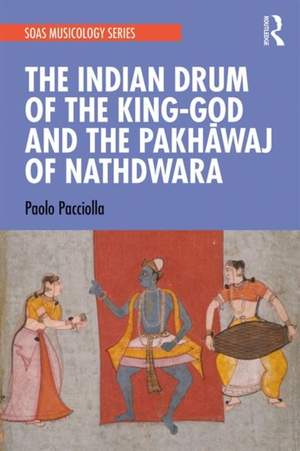Book
$182.50Printed on demand
Contents
- Chapter One. Introduction
- 1.1 Background
- 1.2 Fieldwork among pakhavajis
- 1.3 Ancient courts: the roots of a musical tradition
- 1.4 Nathdwara, a contemporary reign of the King-God and his court
- 1.5 A multidimensional approach
- Chapter Two. A drum between courts and temples
- 2.1 Music, religions, the sacred and the secular in India
- 2.2 Paramparas and gharanas according to contemporary pakhavaj players
- Chapter Three. The pakhavaj in contemporary India and its religious and mythological heritage according to pakhavaj players
- 3.1 The pakhavaj
- 3.2 The pakhavaj and the pakhavaj players in the classical music scene of contemporary India
- 3.3 The pakhavaj heritage according to its players
- Chapter Four. Auspicious Drumming
- 4.1 Auspiciousness
- 4.2 Auspiciousness and its roots
- 4.3 The auspicious arts in literature and other textual sources
- 4.4 Rain on the lotus pond
- 4.5 Gaja-Laksmi
- 4.6 The cloud-drum
- 4.7 Rain of blessings
- Chapter Five. The drum of the King-God: from mrdanga to pakhavaj
- 5.1 The socio-historical context of the emergence of the mrdanga as major courtly drum
- 5.2 The sound of the mrdanga in the aestheticised life of the courts
- 5.3 Siva, the magnification of the warrior king
- 5.4 The drum giving voice to death
- 5.5 Visnu- Krsna, the righteous king and the bhakti cults
- Chapter Six. From mrdanga to pakhavaj
- 6.1 The multiplication of mrdangas and the emergence of the pakhavaj
- 6.2 From mrdanga to pakhavaj and vice versa: making the desi marga and the marga desi
- Chapter Seven. The Nathdwara gharana: playing the pakhavaj for Nathji
- 7.1 Vallabhacarya and the Pustimarg
- 7.2 Sri Nathji, the King-God, and his worship
- 7.3 The role of music and aesthetics in the cult of Pustimarg
- 7.4 The family of Purushottam Das
- 7.5 Pandit Dalchand Sharma and my research
- Chapter Eight. The repertoire
- 8.1 The pakhavaj: facets of its language and playing styles
- 8.2 Compositional types
- 8.3 Parans as structures based on geometrical figures
- 8.4 Parans as prayers
- 8.5 Parans, images and poetry
- 8.6 A knowledgeable king of the 20th century and his parans
- 8.7 The torrent and the rain
- Chapter Nine. The solo pakhavaj recital
- 9.1 The structure of the solo recital
- 9.2 Lotuses, garlands of flowers and the solo pakhavaj
- 9.3 The solo recital of the Nathdwara gharana
- 9.4 Stuti paran
- 9.5 Madhya lay ka prastar
- 9.6 Dhenanaka baj
- 9.7 Paran
- 9.8 Lay tal torneka kata
- 9.9 Chandkari
- 9.10 Thapiya ka baj
- 9.11 Rela
- Conclusion
- Glossary
- Bibliography
- Solo Pakhavaj Recordings



